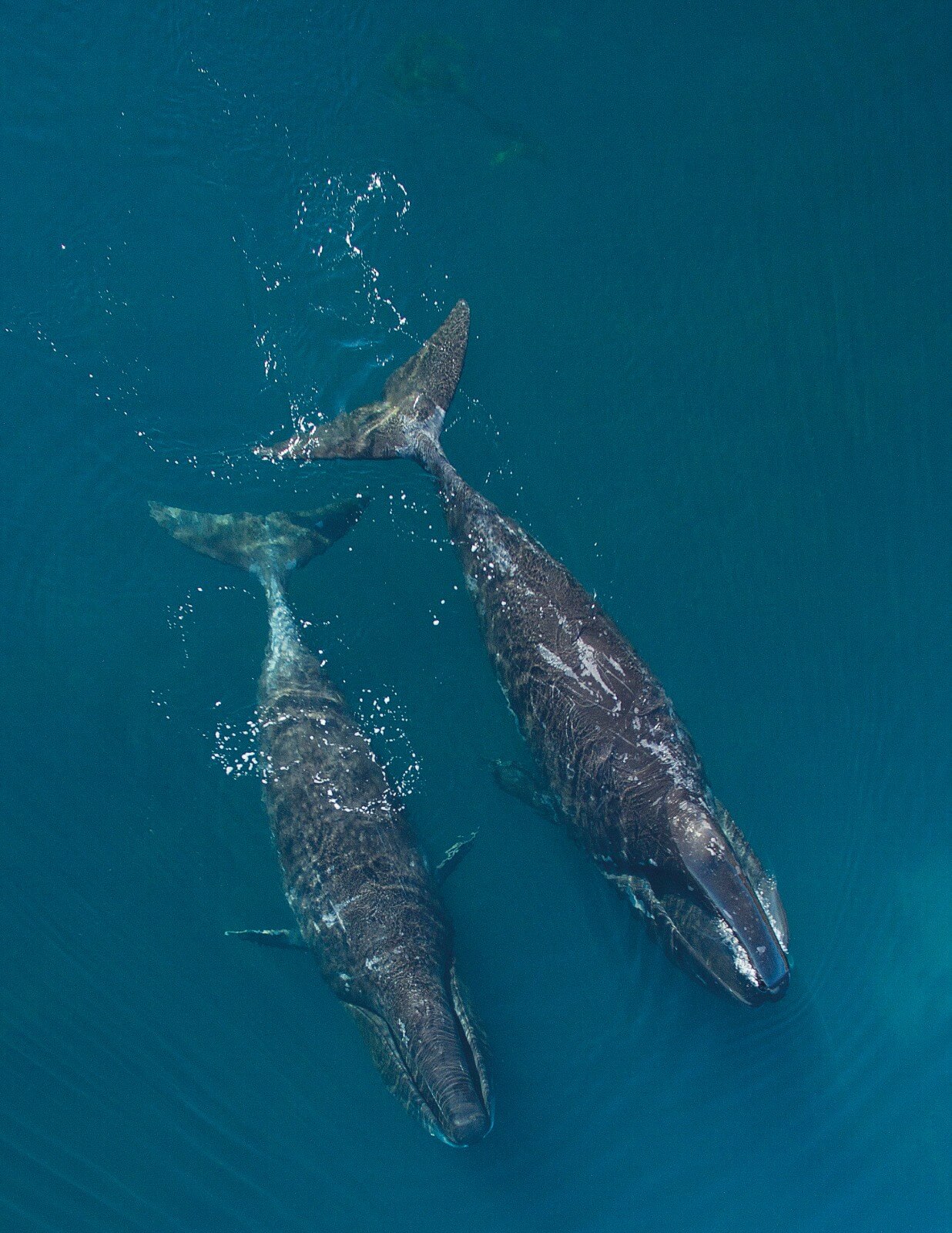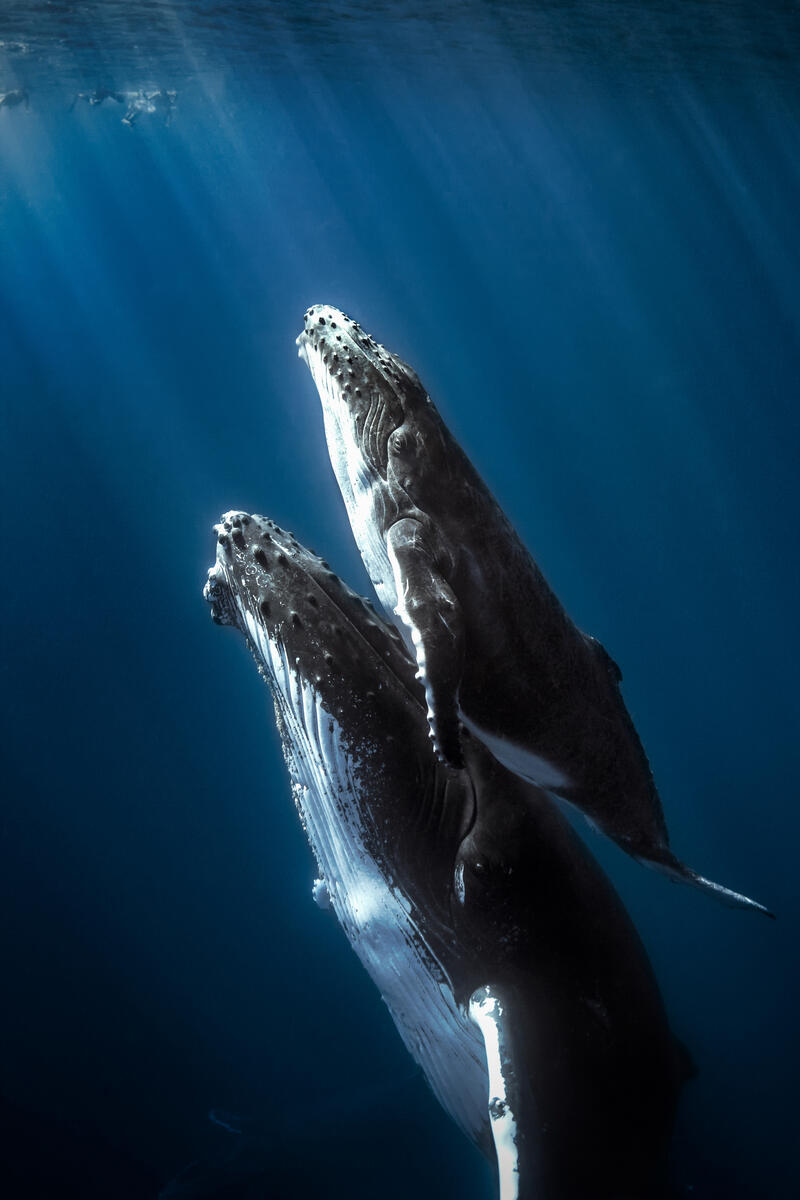© NOAA Photo Library, Dr. Louis M. Herman, CC, Flickr.com
Eavesdropping on a changing Arctic
The animals that inhabit Arctic ecosystems are uniquely adapted to life in the area’s cold, icy waters, where the sun doesn’t rise for months at a time. But as KATE STAFFORD writes, human activity and the rapidly changing climate are having profound impacts on the Arctic’s physical and biological environments, leading to changes in biodiversity.
BELOW THE SURFACE of any ocean, sounds from wind, waves and marine animals contribute to the soundscape. In the Arctic Ocean, sea ice plays a unique role by making an incredible cacophony of noise as it forms, moves and grinds against itself. At the same time, it dampens certain other sounds: in mid-winter, the ice-covered ocean can be eerily quiet because of the absence of wind-driven waves. But in a rapidly warming climate, changes in sea ice, especially its extent and seasonality, are reshaping polar habitats and altering what the underwater Arctic sounds like. For example, increasing storminess and diminishing sea ice are making the Arctic waters louder as winds increase and wave noise is no longer dampened.

© VDOS Global / WWF-Canada
Listening to climate change
Sound travels further and more quickly underwater than in air, so we can listen across many kilometres—much further than we can see. We can tell species apart by the sounds they make. We can even distinguish human-generated sounds from one another. By eavesdropping underwater, we can actually “hear” climate change, even during the polar night and under ice.
Underwater sound gives us unique insights into how the Arctic is transforming by revealing changes in sounds from the air (wind), water (marine mammals) and land (people). For instance, we are hearing more noise from shipping and oil and gas extraction as well as new sounds related to changing biodiversity as new species move North. Sounds from wind and waves in the Arctic—and the ocean in general—are similar to how traffic on a freeway creates background noise in a city. The noises made by individual cars and trucks aren’t generally distinct from one another, but the combined noise from all of the vehicles together limits what else we can hear—and from how far away. It’s clear that increased storminess is increasing background noise levels in the Arctic.
Arctic species face challenges
We know from listening over many years and locations in the Arctic that the area’s marine mammals are changing their migratory patterns as sea ice declines. For instance, bowhead whales have been heard in mid-winter in the Beaufort Sea, far from their usual wintering grounds to the south in the Bering Sea. Further, we can now hear sub-Arctic visitors—like humpback, fin and even killer whales—during many more months of the year and further north as sea ice loss opens up new habitat for them. These species may prey upon or compete for food with Arctic marine mammals. In this way, climate change is actually increasing the seasonal biodiversity of many regions of the Arctic.

© Shutterstock / Seb c est bien / WWF
Meanwhile, Arctic shipping traffic between the Pacific and Atlantic Oceans continues to increase, even in winter—and with it, noise levels in the same frequency bands used by marine mammals. This anthropogenic (human-caused) noise may interfere with marine mammals’ ability to hear and respond to the sounds they rely on to communicate, find mates and locate prey.
Many Arctic species are critical to food security and culture in the Arctic. People who live in the region worry that increasing noise will displace or change the distribution of the animals they rely on and reduce access to those animals.
Listening underwater in the Arctic provides us with compelling evidence of climate change in the region—and confirms that noise levels are increasing as a result of atmospheric changes, increased human use and habitat changes. All of these are altering the biodiversity of marine mammals in the region.
***
KATE STAFFORD is an oceanographer and marine mammal ecologist at Oregon State University in the United States who uses passive acoustic monitoring to examine the migratory movements, geographic variation and physical drivers of marine mammals, particularly large whales.
By WWF Global Arctic Programme